
Monday, 21 April 201408:00 | Registration, Materials Pick-up, and Morning Coffee | |
Session Title: Emerging Trends in Cellular Therapy and Regenerative Medicine. |
| | |
Chairman's Opening Remarks: Allan Wu, MD |
| | 08:30 | 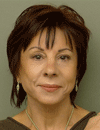 | Keynote Presentation From Ballot Box to Bedside – Advancing Stem Cell Therapies, the California Institute for Regenerative Medicine Experience
Ingrid Caras, Senior Science Officer, California Institute for Regenerative Medicine, United States of America
|
| 09:15 | Designing a Biomarker Program for your Cell Therapy
Sicco Popma, Scientific Director, Johnson & Johnson, United States of America
Biomarker programs can support many decision in product development and cell therapy is no exception. This presentation describes the preclinical and early development biomarker program designed to monitor disease activity and response to treatment for an ocular cell therapy. The biomarker program is designed to support approvable primary functional endpoints, surrogate, and exploratory biomarkers. Although cell therapies can create a new set of challenges, they are being developed in whitespaces allowing for new, distinctive, and quantitative biomarkers. Finally, integrated biomarker strategies can enhance our understanding of disease processes and support clinical development of novel cell therapies. | 09:45 | Transplantation of Retinal Progenitor Cells to the Diseased Retina
Henry Klassen, Associate Professor, University of California Irvine, United States of America
Ann Cooper, Research Veterinarian, University of California-Irvine, United States of America
The isolation of retinal progenitor cells (RPCs) and transplantation to the retina of recipients with retinal degenerations has revealed the therapeutic potential of this approach in the setting of otherwise incurable blinding diseases. The mechanism of action can involve trophic-mediated neuroprotection of host photoreceptors or integration into the host retina and differentiation into retinal cell types such as photoreceptors. Much work has been done to distinguish the RPC as a significant therapeutic candidate. The ongoing project extends this work to the GMP production of human RPCs, formal IND-enabling preclinical studies and early clinical trials. There is much to recommend this approach, including simplicity, safety, and particularly the potential for cell-mediated efficacy in currently untreatable blinding diseases. | 10:15 | Coffee Break, Networking, Exhibit and Poster Viewing | 10:45 | Regenerative Medicine for Veterinary Applications
Kristin Comella, Chief Scientific Officer, Bioheart, Inc., United States of America
The field of regenerative medicine is rapidly growing with an emphasis on stem cell therapies and the promise of cures for everything from acute injuries to chronic degenerative diseases. The list of indications is expanding as more studies are published to demonstrate safety and efficacy. Regenerative medicine is the process of replacing or regenerating human cells, tissues or organs to restore or establish normal function. The concept is that damaged tissue can be restored by using the body’s own healing mechanism to promote repair. This new branch of medicine may change the course of chronic diseases and standard clinical therapies. However, with any new therapies, this must be approached cautiously and with scientific data to support the treatment. This session will discuss the use of stem cell therapies in veterinary applications and the challenges of bringing these products to market. | 11:15 |  Technology Spotlight: Technology Spotlight:
Challenges of Scale in Cell Therapy Manufacturing
James Beltzer, Senior Cell Processing Specialist, Terumo BCT
Moving a promising cell therapy from the initial discovery phase through to clinical trials and therapeutic delivery poses a number of challenges. Not only must an evolving process clear regulatory hurdles and scale to meet dose and lot size requirements, but it must also maintain economic value. In addition to discussing these challenges, a number of case studies will be presented to describe how process development and economic goals were achieved in various laboratories. Particular attention will be directed toward the process changes often needed to meet these goals.
| 11:45 |  Technology Spotlight: Technology Spotlight:
A Comparative Overview of Stromal Vascular Fraction (SVF) Isolation and Characterization Studies Using Mechanical Dissociation and Collagenase
David Angeloni, President, Millennium Medical Technologies (MMT)
Adipose tissue represents a versatile and abundant source of adult mesenchymal stem cells (MSC). The role of the physician in serving as chief procurement practitioner for adipose derived stem cells (ADSC) requires improving efficiencies such as procedural times from harvesting to deployment while minimizing costs and maintaining a high standard of care. This is critical for any regenerative center which strives to remain “profitable” and still yield an adequate amount of viable ADRC’s with minimal effort and costs in a point of care model. To date there are several methods and devices that attempt to address these concerns, however, many of these methods and devices have overlooked using cells released into the aspirate via mechanical dissociation during tumescent liposuction. In this talk I will review and compare recent published and independent studies which have looked into quantifying and characterizing these cells and equating them to what can be normally yielded by a standard collagenase process.
| 12:15 | Lunch, Networking, Meet the Exhibitors, and View Posters | |
Session Title: Adipose-derived Stem Cells for Regenerative Medicine. |
| | |
Session Chairman: Dennis Clegg, PhD |
| | 13:15 | 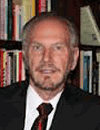 | Keynote Presentation Layered Autologous Fat Transplantation - The Road to Perfection in Facial and Body Sculpturing
Mel Bircoll, Surgeon, California Academy of Cosmetic Surgery, United States of America
Now, the availability of cryo-preserved adipose tissue opens the door for the clinician to achieve maximum results for fat grafting with convenience and safety. A single Liposuction can provide the tissue for an initial fat grafting procedure or later treatments in an outpatient, sterile setting under local anesthesia. Layering proper graft quantities, rather than "pushing" or over filling in the initial stage, will result in the sought after perfection we all seek. Caution will be presented to maintain Fat Transfer as a pure fat graft, an operation between the doctor and patient, while still harvesting adipose tissue as a source of stem cells. The ability to obtain pure, cultured IRB approved stem cells from cryo-preserved fat, further creates a pathway for both the clinician and researcher to use these cells in present and future approved applications.
The use of layered fat grafting in breast cancer prevention surgery for high risk women will be presented. |
| 14:00 | Adipose Derived Stromal Vascular Fraction and the FDA: The Cell Surgical Network Position
Mark Berman, Past President, American Academy of Cosmetic Surgery; Medical Director, California Stem Cell Treatment Center, United States of America
Over the last two years the Cell Surgical Network (CSN) has fielded
several criticisms from a number of scientists and bio-ethicists
questioning their right to deploy adipose derived SVF. Code of Federal
Regulation 21 part 1271 provides a list of elements that allow the FDA
to determine whether Human Cells, Tissues and Tissue Products are a drug
that can be regulated by the FDA. Letters from FDA Tissue Reference
Groups have been circulated as proof that groups such as CSN are in
violation of these FDA regulations. This presentation will argue that
CSN is indeed in full compliance of the FDA regulations. Further it
will address the controversy and point out how these misrepresentations
have gained so much traction with many groups of doctors, scientists and
ethicists. | 14:30 | Regenerative Urology and ED
Elliot Lander, Medical Director, California Stem Cell Treatment Center, United States of America
| 15:00 | Coffee Break, Networking, Exhibit and Poster Viewing | 15:30 | Managing Sports and Arthritic Complaints with Stem Cell Therapy
Dennis Lox, Physician, Florida Spine and Sports Medicine Center, United States of America
The use of stem cells in various musculoskeletal problems from the professional athlete to the elderly facing debility will be addressed. Selected case histories will illustrate the role for stem cells in a vast array of potential clinical situations. | |
Session Title: University of California, Riverside Sponsored Session on Emerging Technologies and Approaches in the Stem Cells Field |
| | 16:00 | 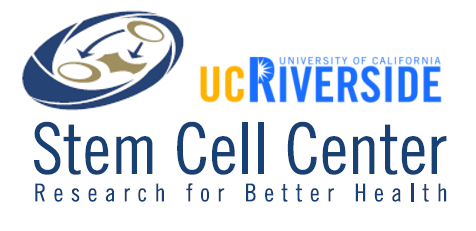 Introduction to the University of California, Riverside Stem Cell Research Center by Professor Prue Talbot, Director UC-Riverside Stem Cell Center and Core Introduction to the University of California, Riverside Stem Cell Research Center by Professor Prue Talbot, Director UC-Riverside Stem Cell Center and Core
Professor Talbot will serve as Chair of this Session Sponsored by the University of California, Riverside Stem Cell Research Center.
Professor Talbot will provide an introduction to the research projects being conducted at the UC-Riverside stem cell center focusing on the translation of stem cell research towards clinical applications. Subsequently, each of the first authors on the chosen abstracts will present a 15-minute presentation.
| 16:15 | Using Video Bioinformatics Quality Control Software to Evaluate the Health of Stem Cell Populations
Atena Zahedi, Researcher, University of California-Riverside, United States of America
Vincent On, Electrical Engineering, University of California-Riverside, United States of America
| 16:30 | Viability, Adhesion, and Morphology of Bone Marrow Stromal Cells on Four Magnesium-Zinc-Calcium Alloys
Aaron Cipriano, Student, University of California-Riverside, United States of America
| 16:45 | Enhanced Differentiation to Mesendodermal and Ectodermal Lineages using Nanofibrous Scaffolds
Maricela Maldonado, Bioengineering, University of California-Riverside, United States of America
| 17:00 | Understanding How Fluidic Agitation Impacts Human Pluripotent Stem Cells in Dynamic Suspension
Daniel Nampe, Bioengineering, University of California-Riverside, United States of America
| 17:15 | Over-expression of miR-361 in Embryonic Stem Cells as a Means to Generate Clinically-Relevant Osteo-Progenitors
Devon Duron Ehnes, Graduate Student, University of California-Riverside, United States of America
| 17:30 | Chemical Biology and High-throughput Strategy for Dissecting Human Stem Cell Pluripotency and Differentiation for Translational Research
Jiayu Liao, Associate Professor, Bioengineering and Stem Cells, University of California, Riverside, United States of America
| 17:45 | Working with UCR
Michael Pazzani, Vice Chancellor for Research and Economic Development, University of California-Riverside, United States of America
Dr. Pazzani will discuss UCR’s corporate partnership programs which present a unified way for companies to recruit graduating students and interns, attend specialized courses, use advanced facilities at universities, conduct research in collaboration with the university, and license technology developed at the university. | 18:00 | Session Summary, Closing Remarks, and Best Poster and Best Student Presentation Award Ceremony
Prue Talbot, Director, University Of California Riverside, United States of America
Professor Talbot and Dr. Pazzani will hand out awards to the Best Student Oral Presentation and Best Poster Presentation.
| 18:15 | Close of Day 1 Presentations and Adjourn to Clinical Practicum at Local Surgery Center
All procedures in this Clinical Practicum demonstrated using adipose tissue and cells are performed in accordance with all applicable laws and regulations by surgeons and are designed to illustrate in a practical manner the technologies and practices discussed during the conference presentations.
| 18:45 | 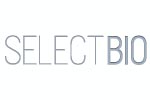 Technology Spotlight: Technology Spotlight:
Clinical Practicum: Hands-on Demonstration of Adipose-derived Stem Cell Manipulations Ex Vivo at Surgery Center.
Allan Wu, Chief Scientific Officer, The Morrow Institute
The Clinical Practicum will be hosted at the following surgery center:
La Quinta Surgery Center
78441 Hwy 111
La Quinta, CA 92253
Telephone: 760-564-7874
Procedures will be Demonstrated by the Following Surgeons:
Session Moderated by: Albert Lai, MD
Joe Purita, MD will be performing the injection of simple fat into the joint under Carm guidance. The procedures demonstrated are performed by board-certified surgeons in compliance with all applicable laws and regulations.
This will be an amazing opportunity for the conference delegates to watch and experience the clinical translation of stem cells in real-time and is open to all registered delegates and speakers of this conference.
Dr. Joseph Purita is a doubly board certified in Orthopedic Surgery and Pain Management and has been featured in Sports Illustrated for his contributions and ground breaking work in regenerative orthopedic techniques in rehabilitating some of the most difficult professional sport injuries. He has been one of the first practitioners to clinically utilize both stem cells, cytokines and other unique regenerative factors to promulgate novel “leading-edge” orthopedic therapies.
|
Tuesday, 22 April 201408:00 | Morning Coffee and Networking | |
Session Title: Adult Stem Cells, Stromal Vascular Fraction, and Other Cell Classes: Researcher, Clinician, and Regulatory Perspectives |
| | |
Session Chairman: Richard Enmon, PhD JD |
| | 08:15 | 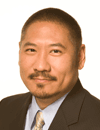 | Keynote Presentation ADSC and SVF: The Unlikely Suspects in Novel Immunotherapeutics
Allan Wu, Chief Scientific Officer, The Morrow Institute, United States of America
Great success has been achieved with dendritic cells (DC) and antigen presentation -based immunotherapeutics for cancer therapy. The rise of this novel cellular therapy has been validated and legitimated with recent FDA approval of Provenge for prostate cancer. Interestingly, Adult Mesenchymal Stem Cells are also capable of antigen presentation in addition to other cells found within SVF. A novel and patent pending method of rapid point-of-care autologous and personalized immunotherapy using the subjects' own SVF and tumor antigen is presented for the first time and exclusively at the Clinical Translation of Stem Cells Summit. Attendees will be offered a first glimpse at a profoundly new field, which patients and the adult stem cell and autologous community will greatly benefit from. |
| 09:00 | 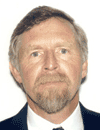 | Keynote Presentation Biomimetic Scaffolds for Adipose and Pluripotent Stem Cells
Dennis Clegg, Professor, University of California Santa Barbara, United States of America
|
| 09:45 | 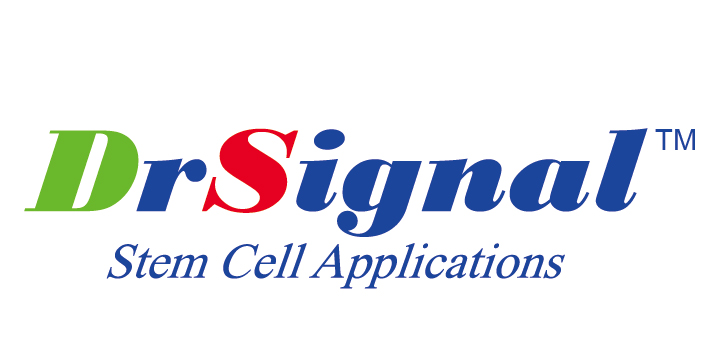 Technology Spotlight: Technology Spotlight:
Applications of Mesenchymal Stem Cells for Cosmetic Product Development and Translational Regenerative Medicine
Frank Mi, General Manager, DrSignal BioTechnology Co., Ltd. Taiwan
Mesenchymal stem cells (MSCs) are defined as undifferentiated cells that are capable of self-renewal and differentiation into several cell types such as chondrocyte, adipocyte, osteocyte, myocyte, hepatocyte, and neuron-like cells. Moreover, MSCs express several extracellular matrix (ECM) molecules such as collagen, fibronectin, laminin, and proteoglycans. Furthermore, MSCs can yield a series of cytokines and signal molecules that can suppress inflammatory responses such as IL-1 receptor antagonists and can upregulate anti-inflammatory cytokines such as IL-10 and IL-6. Unlike conventional skin care products can only slow down the aging process, biological formula (Bioliquid) derived from MSCs are able to stimulate cellular repair and regeneration. Compared to the other ingredients, Stem Cell Bioliquid with better absorption and penetration effect can revitalize skin by enhancing healthy cell proliferation and improving the rate of cell metabolism. The skin care products with the addition of Stem Cell Skin Bioliquid will be beneficial in obtaining the anti-aging effect equivalent to accept the top-level cosmetic rejuvenation medical treatment.
Our company – DrSignal also aims to accelerate the translation of laboratory research from stem cell and molecular biology into the clinical regenerative medicine. It is the first time that a novel injectable bio-graft which composed of MSCs (gingival stem cells and adipocyte stem cells), bone cement (calcium sulfate powder) and Stem Cell Bone Bioliquid, was developed for the applications of bone regeneration. In the animal model, we can engineer a scaled-up ossified tissue with features of a “bone organ,” including physiologically corticale bone, mature vasculature, and a hematopoietic compartment by using the injectable bio-graft. This work provides a model helpful for the applications of translational bone regeneration on the alveolar bone augmentation in dental implant surgery.
| 10:15 | Adipose Stem Cells: Molecular Identification for Metabolic Reprogramming
Shigeki Sugii, Group Leader, Singapore Bioimaging Consortium, Singapore
We have identified novel cell surface markers specific for adipose-derived stem cells (ASCs) from subcutaneous and visceral fat depots, which make distinct pathophysiological contributions. I will discuss the potential of using these markers for metabolic reprogramming studies: bioimaging, screening for phenotypic switch and improved adipocyte differentiation, or reprogramming into induced pluripotent stem (iPS) cells. | 10:45 | Coffee Break, Networking, Exhibit and Poster Viewing | 11:15 | Answering Questions About Obstacles, Especially Financial and Regulatory, to Evidence-Gathering for your Research to become a Standard of Care Practice
Fred Fox, Ethicist, BioMedical Research Institute -- BioMed IRB, United States of America
To start the presentation off, Fred Fox will present a "hypothetical" case study. If there are no specific questions from participants, then a survey set of questions will be posed and addressed by Mr. Fox, following the common elements for any stem cell research and development project.
The case study is loosely based on the elements from the real news report of an academic team, in China, using urine to collect cells and then induce stem cells later trained to be stem cells for a dental repair. [that news report is available from this link http://www.bbc.co.uk/news/health-23492425]. What are the obstacles in collecting cells, in the case study, from urine? What are the obstacles in GTP for storing, inducing stem cells and having a stem cell line for research and development, in general? Which obstacles are specific to using a patients own stem cells for any specific and near instant medical procedures? What other diagnostic or treatment obstacles should be addressed if missing teeth are to be replaced or, in a variation on the hypothetical case study, if patients are to bypassing "implants" with titanium screws for 3D-printed biomaterials seeded with stem cells to repair teeth in place.
What are the specific obstacles, especially financial or regulatory, to using induced stem cells in dental repair studies on the path of commercialization, from clinical investigations through a standard of care with reimbursement codes?
Questions from Delegates are Welcome.
| 11:45 | Panel Discussion Focusing on Regenerative Medicine Industry Trends
John Sterling, Editor-in-Chief, Genetic Engineering & Biotechnology News, United States of America
Panelists:
- Ingrid Caras, PhD, California Institute of Regenerative Medicine (CIRM)
- Allan Wu, MD, Regenerative Surgery Institute
- Dennis Clegg, PhD, University of California-Santa Barbara
- Sicco Popma, PhD, Janssen R&D/Johnson & Johnson
- Ron Shane, PhD, Research Scholar-UCSD
| 12:30 | Lunch, Networking, Meet the Exhibitors, and View Posters | 13:30 |  Technology Spotlight: Technology Spotlight:
Better Manufacturing Practice for Cell Therapies
Ken Rando, Sales Representative, Biospherix Ltd
The Xvivo System Barrier Isolator reduces risk and provides superior process control for the culture, processing, and expansion of cell-based therapeutics. Total isolation protects the cells from possible contamination, the people from viral vectors,…as well as allow for the optimization of the cell environment. Superior process control results in a higher quality cell product and more consistent results for your entire protocol. The BioSpherix GMP system provides a seamless transition from pre-clinical to clinical production of cell based products at a fraction of the cost of a cleanroom.
| |
Session Title: Emerging Themes, Challenges, and Patenting: The Clinical Translation of Stem Cells |
| | |
Session Chair: Barbara Krutchkoff |
| | 14:00 | The Stem Cell Controversy In Intellectual Property In Europe
Richard Enmon, US and EU Registered Patent Attorney, Vossius and Partner, Germany
Stem cell based technology offers unique opportunities for potentially life-changing therapies, but nevertheless remains one of the most controversial and vigorously debated fields of scientific research. Patent rights have been developed to arguably protect and foster such scientific advancement, and, since their inception, have also explicitly rejected the protection of inventions based on unethical research, or research contrary to the ordre public. However, recent decisions by the Technical Boards of Appeal of the European Patent Office seem to indicate that rather than interpreting the implementing provisions narrowly as proscribed, the definition of patentable subject matter is being swayed by the changing popular opinions of various member countries as reflected in their high-court decisions. This presentation seeks to provide an overview of the changing positions taken by national and international bodies with respect to stem cell technology and its impact on the potential for future patent protections. | 14:30 | Cutting Edge Concepts in the Use of Stem Cells and PRP Injections in an Office Setting
Joseph Purita, Medical Director of Stem Cell Centers of America, Institute Of Regenerative and Molecular Orthopedics, United States of America
The presentation concerns the use of PRP and Stem cell injections for treatment of musculoskeletal conditions. Our clinic has made extensive use of Platelet Rich Plasma in conjunction with Bone Marrow Stem Cells (BMAC) and Adipose Stem Cells (SVF) and fat grafts. All of these components are harvested from the patient, minimally manipulated, and utilized the same day. Indications are given as to which type of cell and technique to use to accomplish repair. For instance stem cells, both bone marrow derived (BMAC) and fat stem cells, are typically used for the more difficult problems such as osteoarthritis of the joints. While PRP injections are utilized for the less severe tendon problems. Discussed are the indications of when to use Stem Cells verses PRP alone.
The newest concepts in stem cell regenerative science are presented. Important basic science aspects of both PRP and stem cell preparations are discussed. This presentation defines what constitutes a clinically effective PRP product including proper numbers of growth factors, Platelets, CD-34 stem cells and WBCs which play a significant role in the production of SDF-1a and SCF which are two growth factors which allow stem cells to migrate (homing) to areas of injury. Some new cutting edge concepts are also presented including Exosomes and their use. A onetime thought to be cellular debris, Exosomes are now poised to significantly change our concepts of stem cells from which they are produced. They are important vehicles for the transportation of growth factors. Further discussion centers on the clinical use of recombinant cytokines and interleukins to make up for deficiencies in the incipient PRP and Stem cell products. Finally discussion concerns the use of Blastomere Like Stem Cells which are found in many portions of the body and are thought to be totipotent. | 15:00 | Coffee Break, Networking, Exhibit and Poster Viewing | 15:30 | Image Guided Therapeutic Stem Cell Injections
John Feller, Medical Director, Desert Medical Imaging, United States of America
This lecture will review the components of using image guidance as part of a comprehensive stem cell therapy program including:
- Determine the target.
- Delivery of the stem cells to the target.
- Follow up for response to therapy.
| 16:00 | Percutaneous Lumbar Intradiscal Injection of Autologous Bone Marrow Concentrated Cells Significantly Reduces Discogenic Pain through 12 Months
Ken Pettine, Fellowship Trained Spine Surgeon, Premier Stem Cell Institute, United States of America
There are few non-surgical options for treating discogenic low back pain. Conservative therapy involves steroidal and non-steroidal injections, physical therapy, exercise, chiropractic treatments and systemic prescription pain relief, but usually doesn't provide durable pain relief. In this open label pilot study, twenty-six patients (median age 40 years; range 18-61) received autologous bone marrow concentrate (BMC) intra-discal injections (13 with one level, 13 with two levels injected). Pre-treatment Oswestry Disabilty Index (ODI) and Visual Analogue Scale (VAS) were performed to establish baseline pain scores (average 56.5 and 79.3, respectively). Cell analysis was performed on an aliquot of each patient's BMC. The average BMC comprised 121x10e6 TNC/mL including 3,019 CFU-F (synonymous with mesenchymal stem cells). The average ODI and VAS scores for 24/26 patients were reduced to 25.0 and 33.2 at 12 months (p?0.0001), respectively. Eight of 20 patients improved by one modified Pfirrmann grade, suggesting an improved hydration state in the disc. | 16:30 | Systemic Auspicious Modulation of Older Cell Lines in culture and in the Mouse Model as a Function of Cytokine Configurations from Non Autologous Stem Cell Sources
Ron Shane, Medical and Research Director, Millennia Concepts Biotech, LLC/American Academy of Anti-aging Medicine, United States of America
Intravenous injections of autologous stem cells have not demonstrated any efficacy in terms of reversing empirical parameters of aging. Moreover, this form of prophylaxis has only been mildly efficacious in terms of mitigating bodily inflammation and possibly reducing tissue degeneration. Distinctive kinds of stem cells can provide an opulent plethora of peptide matrices. There has not been any studies showing whether cytokine configurations could propitiously modify gene expression of older phenotypes. Recent studies, at the Burnham Institute, and Texas A & M have demonstrated that systemic injections of high concentrations of cytokine configurations can dramatically change the genome to where older treated phenotypes exhibit a MRNA profile more consistent with a younger untreated organism. Thus, the diverse array of undifferentiated progenitor cells may now be regarded as biological factories for a unique array of efficacious peptides to reeducate cellular homeostatic protein expression.
| 17:00 | Muse Cells Derived from Adipose Tissue: A New Perspective on the Clinical Potential of Adult Pluripotent Stem Cells
Gregorio Chazenbalk, Research Associate, Dept of Obstetrics and Gynecology, University of California-Los Angeles, United States of America
The gold standard human pluripotent stem cells, embryonic and induced pluripotent stem cells have self-renewal uncontrolled capacity which often materializes in teratoma formation. A novel population of human pluripotent stem cells derived from adipose tissue (AT), termed Multilineage Differentiating Stress Enduring (Muse) (Muse-AT cells) was recently introduced to the scientific community, offering a resolution to the teratogenesis issue that plague ES and iPS cells. Muse-AT have self-renew capacity in a controlled manner without forming teratomas when injected into immune-deficient mice. Muse-AT cells are obtained from lipoaspirate material without the need of genetic manipulation nor the use of cell sorting techniques. Muse-AT cells express classic pluripotency markers and differentiate into cells from the three embryonic germ layers both spontaneously and under media-specific induction. Muse-AT cells exist in a quiescent state under normal physiological circumstances within the cellular niche. Furthermore, Muse-AT cells may function according to a highly conserved cellular mechanism related to cell survival in response to severe cellular stress, as well as the functional regeneration of damaged tissues and amputated limbs in primitive species. Because lipoaspiration is a safe and non-invasive procedure and Muse-AT cell isolation requires a simple yet highly efficient purification technique, Muse-AT cells could provide an ideal source of pluripotent-like stem cells with the potential to have a critical impact on regenerative medicine and cell-based therapy. | 17:30 | Close of Main Conference. | 18:30 | Skin and Dermatological Applications of Stem Cells: LATE-BREAKING SESSION Presented by Leaders in the Field [Separate Registration Required]. Please Click "Dermatology" Tab on Website for Details. |
|

 Add to Calendar ▼2014-04-21 00:00:002014-04-22 00:00:00Europe/LondonClinical Translation of Stem Cells 2014Clinical Translation of Stem Cells 2014 in Palm Springs, California, USAPalm Springs, California, USASELECTBIOenquiries@selectbiosciences.com
Add to Calendar ▼2014-04-21 00:00:002014-04-22 00:00:00Europe/LondonClinical Translation of Stem Cells 2014Clinical Translation of Stem Cells 2014 in Palm Springs, California, USAPalm Springs, California, USASELECTBIOenquiries@selectbiosciences.com